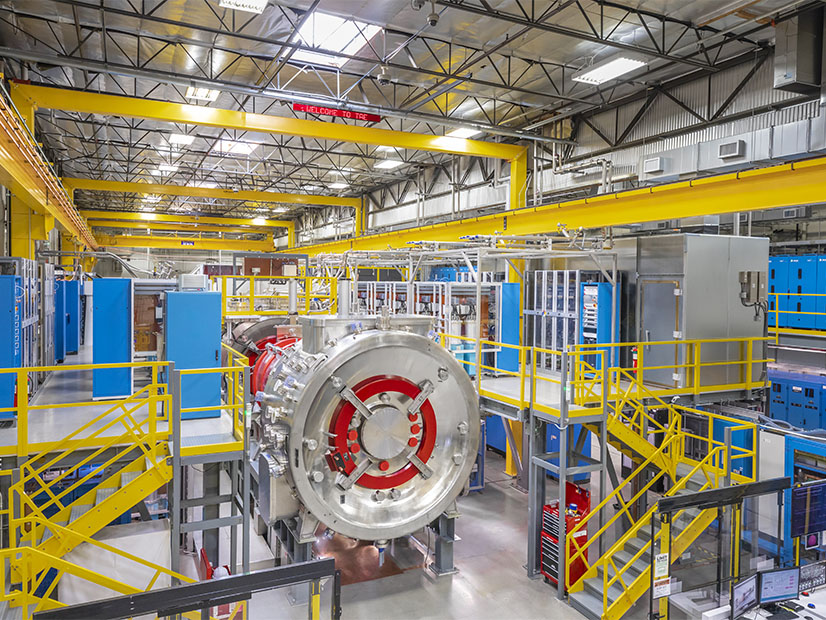
California-based TAE Technologies on Tuesday said its research reactor had achieved and maintained control of plasma in the heart of a fusion reactor at a temperature of 75 million degrees Celsius (135 million degrees Fahrenheit) in a self-created magnetic field.
The company’s target temperature is 100 million C (180 million F), which it believes it can control to initiate sustained fusion and build a commercial reactor by the end of the decade.
TAE is among a half dozen startup research companies, including one in Seattle, working to develop a working fusion reactor to create energy by fusing atoms rather than splitting them as conventional nuclear power plants do. (See Fusion Company Gets $500 million.) Fission creates radiation in the process and leaves behind radioactive waste, some of which will be dangerous for millions of years. Fusion reactors do not produce long-term radioactive waste.
Unlike competing fusion research companies that have been working to fuse hydrogen from heavy elements and can be slightly radioactive while operating, TAE has been working since 1998 with hydrogen and boron, a common element found in cleaning products.
TAE’s rector creates enormous amounts of heat by fusing the nuclei of hydrogen atoms with those of boron atoms in a radiation-free process that also creates helium, an inert gas. Boron is ubiquitous on Earth, and the company estimates a 100,000-year global supply.
The research reactor is a fifth-generation test machine, dubbed “Norman” in honor of TAE co-founder Norman Rostoker, a Canadian plasma physicist who died in 2014. The reactor began operating in 2017.
The company credited Norman’s success to sophisticated control technologies it developed with Google since partnering with it in 2014.
“Through successful training of Norman’s state-of-the-art control system, paired with proprietary power-management technology and extensive optimization of our machine-learning algorithms, we have achieved a scale of control at an unparalleled level of integrated complexity,” TAE CEO Michl Binderbauer said in a statement.
The success of the Norman reactor has enabled TAE to secure $250 million in new funding for a larger test reactor, which it has named Copernicus. Since its founding it has received $1.2 billion in private investment and received more than 1,100 patents related to its technology.
The most recent investors include Chevron, Google, Reimagined Ventures, Sumitomo and Tiff Investment Management, as well as a large pension fund and a mutual fund manager, both unidentified.
“The caliber and interest of our investors validates our significant technical progress and supports our goal to begin commercialization of fusion by the end of this decade,” Binderbauer said. “Global electricity demand is growing exponentially, and we have a moral obligation to do our utmost to develop a baseload power solution that is safe, carbon-free and economically viable.”
The company characterized its hydrogen-boron technology as “the cleanest, safest, most economical terrestrial fuel cycle for fusion, with no geopolitical concerns or proliferation risks.”
The company’s announcement includes little detail on the “balance of plant” technologies that it will need to harness the enormous amounts of energy created by the fusion. In a FAQ document accompanying the announcement, there is a reference to a “steam generator.”
“Just as you feel warmth when sunlight hits your skin, in a power plant, the containment vessel wall will heat up from energetic light emanating from the plasma. The wall will be cooled through a network of pipes, which have working fluid streaming through them to pick up the heat and transport it to a steam generator,” the FAQ explains.
“The steam spins a turbine that then drives an electric generator, similar to what happens in operating power plants today. TAE’s unique fusion core supplies a superior and environmentally benign heat source for future power plants.”

